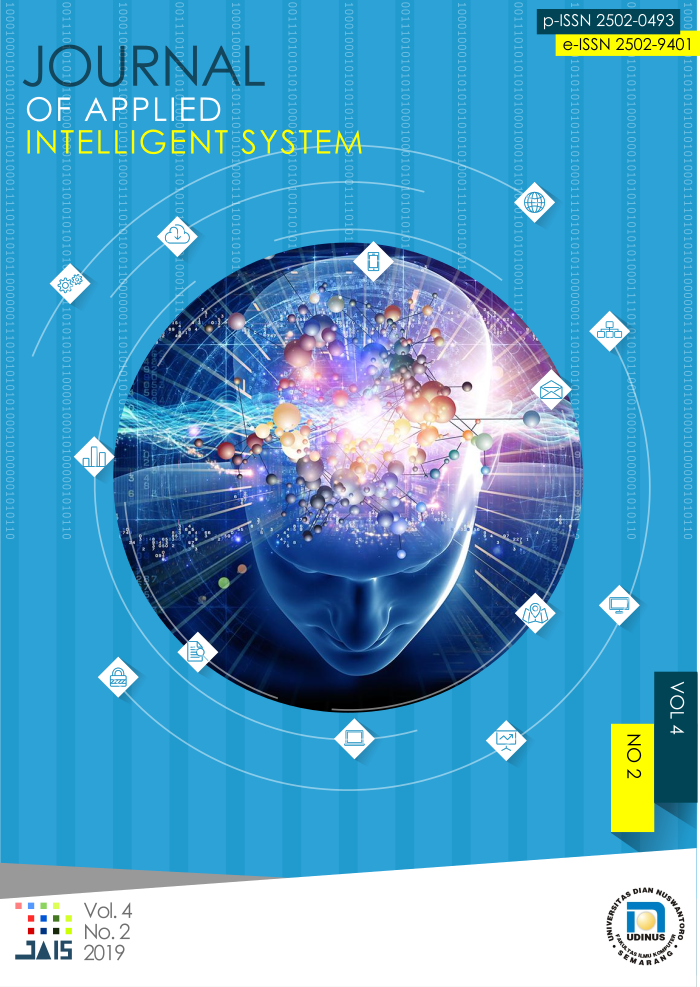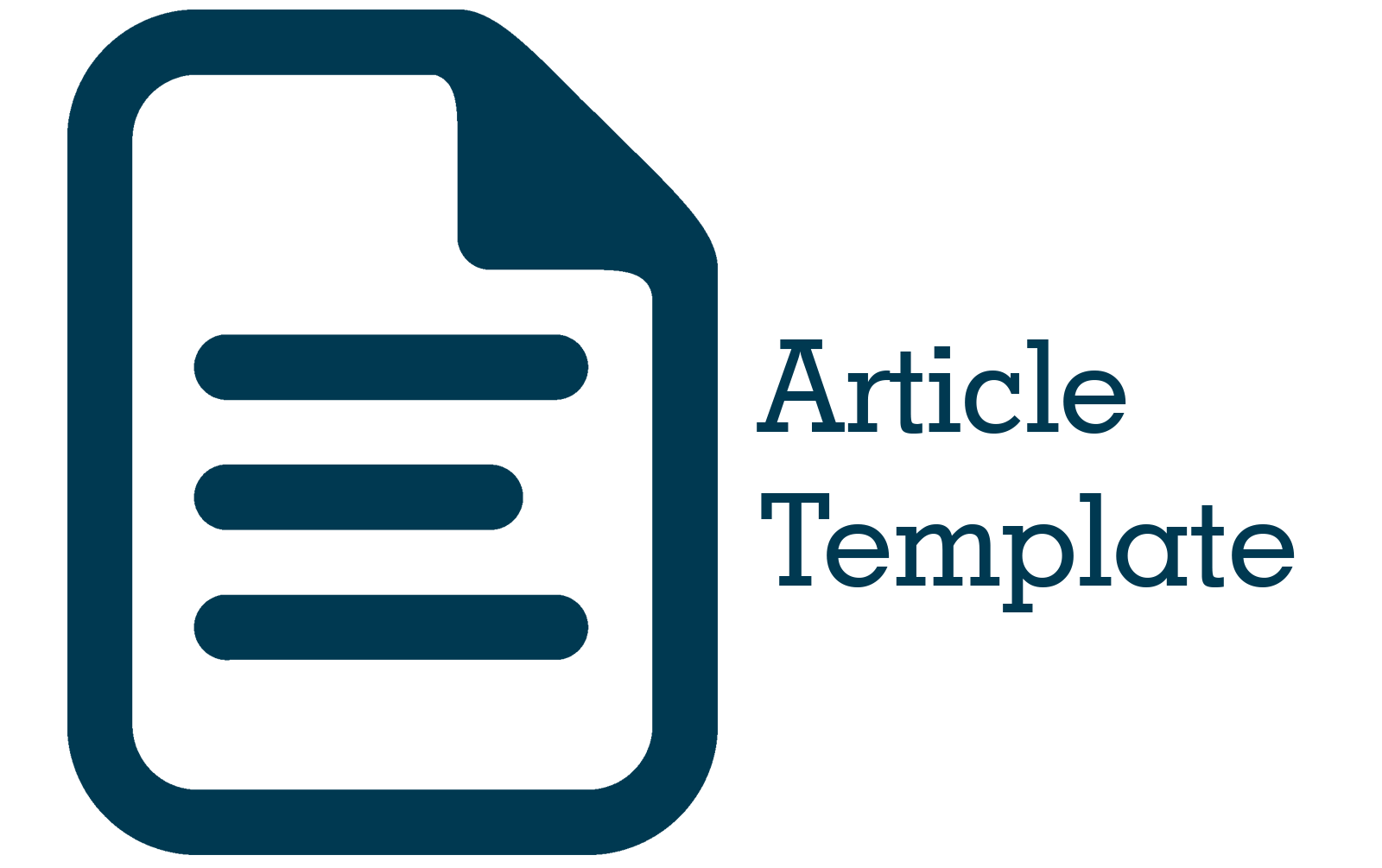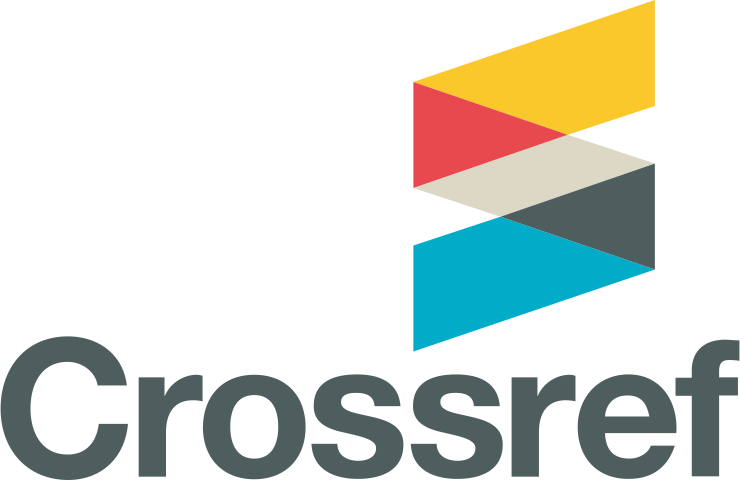Sliding Modes Strategy Implementation for Controlling Nutrition in Hydroponics Based IoT
DOI:
https://doi.org/10.33633/jais.v4i2.2767Abstract
To reduce unconsistenly of nutrition sensor data, an analysis which consists of mathemathical model and new control technique is required. In this paper, a simulation of smart garden is performed to simulate a smart green campus. However, the problem appears in this activity, the data form sensor is not consistent and it may harm the plant because sometime the plant may get a much nutrition and another time the plant will get less nutrition. Our propose is on the sensor circuit, we use additional circuit to our TDS meter so the data is normalized using this circuit.References
V. K S and R. R. Neeralagi, “IoT based Health Monitoring using Fuzzy logic,†Int. J. Comput. Intell. Res., vol. 13, no. 10, pp. 2419–2429, 2017.
M. I. Mahali, “Smart Door Locks based on Internet of Things Concept with Mobile Backend as a Service,†J. Electron. Informatics, Vocat. Educ., vol. 1, no. November, pp. 171–181, 2016.
N. Gligorić, T. DimÄić, S. KrÄo, and V. DimÄić, “Internet of Things Enabled LED Lamp Controlled by Satisfaction of Students in a Classroom,†in A publication of IPSI Bgd Internet Research Society New York, 2014.
S. Tembe, S. Khan, and R. Acharekar, “IoT based Automated Hydroponics System,†Int. J. Sci. Eng. Res., vol. 9, no. 2, pp. 67–71, 2018.
D. Komaludin, “Penerapan Teknologi Internet of Thing (IoT) pada Bisnis Budidaya Tanaman Hidroponik sebagai Langkah Efisiensi Biaya Perawatan,†in Festival Riset Ilmiah Manajemen & Akuntansi, 2018, pp. 682–690.
P. N. Crisnapati, I. N. K. Wardana, I. K. Agus, A. Aryanto, and A. Hermawan, “Hommons : Hydroponic Management and Monitoring System for an IOT Based NFT Farm Using Web Technology,†in 2017 5th International Conference on Cyber and IT Service Management (CITSM), 2017, no. March 2018, pp. 1–6.
M. Naufal, R. Ibrahim, M. Solahudin, and S. Widodo, “Control System for Nutrient Solution of Nutrient Film Technique Using Fuzzy Logic,†TELKOMNIKA, vol. 13, no. 4, 2015.
M. Prathisthaya, Liyantono, and M. Solahudin, “Rancang Bangun Sistem Kendali Proportional Integral- Deritative pada Pengendalian Konsentrasi Larutan Nutrisi Hidroponik,†in Proceedings of the National Seminar FTIP UNPAD – PERTETA – HIPI 2014, 2014, pp. 376–384.
Chen, S.Y.; Gong, S.S. Speed tracking control of pneumatic motor servo systems using observation-based adaptative dynamic sliding-mode control. Mech. Syst. Signal Process. 2017, 94, 111–128.
Huang, Y.; Khajepour, A.; Ding, H.; Bagheri, F.; Bahrami, M. An energy-saving set-point optimizer with a sliding mode controller for automotive air-conditioning/refrigeration systems. Appl. Energy 2017, 188, 576–585.
Mironova, A.; Mercorelli, P.; Zedler, A.; Mironova, A.; Mercorelli, P. Robust Control using Sliding Mode Approach for Ice-Clamping Device activated by Thermoelectric Coolers. Int. Fed. Autom. Control 2016, 25, 470–475.
Norton, M.; Khoo, S.; Kouzani, A.; Stojcevski, A. Adaptive fuzzy multi-surface sliding control of multiple-input and multiple-output autonomous flight systems. IET Control Theory Appl. 2015, 9, 587–597.
He, T.; Li, L.; Zhu, J.; Zheng, L. A Novel Model Predictive Sliding Mode Control for AC/DC Converters with Output Voltage and Load Resistance Variations. In Proceedings of the 2016 IEEE Energy Conversion Congress and Exposition (ECCE), Milwaukee, WI, USA, 18–22 September 2016; pp. 1–6.
Downloads
Published
Issue
Section
License
- Authors retain copyright and grant the journal right of first publication with the work simultaneously licensed under a Creative Commons Attribution License that allows others to share the work with an acknowledgment of the work's authorship and initial publication in this journal.
- Authors are able to enter into separate, additional contractual arrangements for the non-exclusive distribution of the journal's published version of the work (e.g., post it to an institutional repository or publish it in a book), with an acknowledgment of its initial publication in this journal.
- Authors are permitted and encouraged to post their work online (e.g., in institutional repositories or on their website) prior to and during the submission process, as it can lead to productive exchanges, as well as earlier and greater citation of published work (See The Effect of Open Access).









